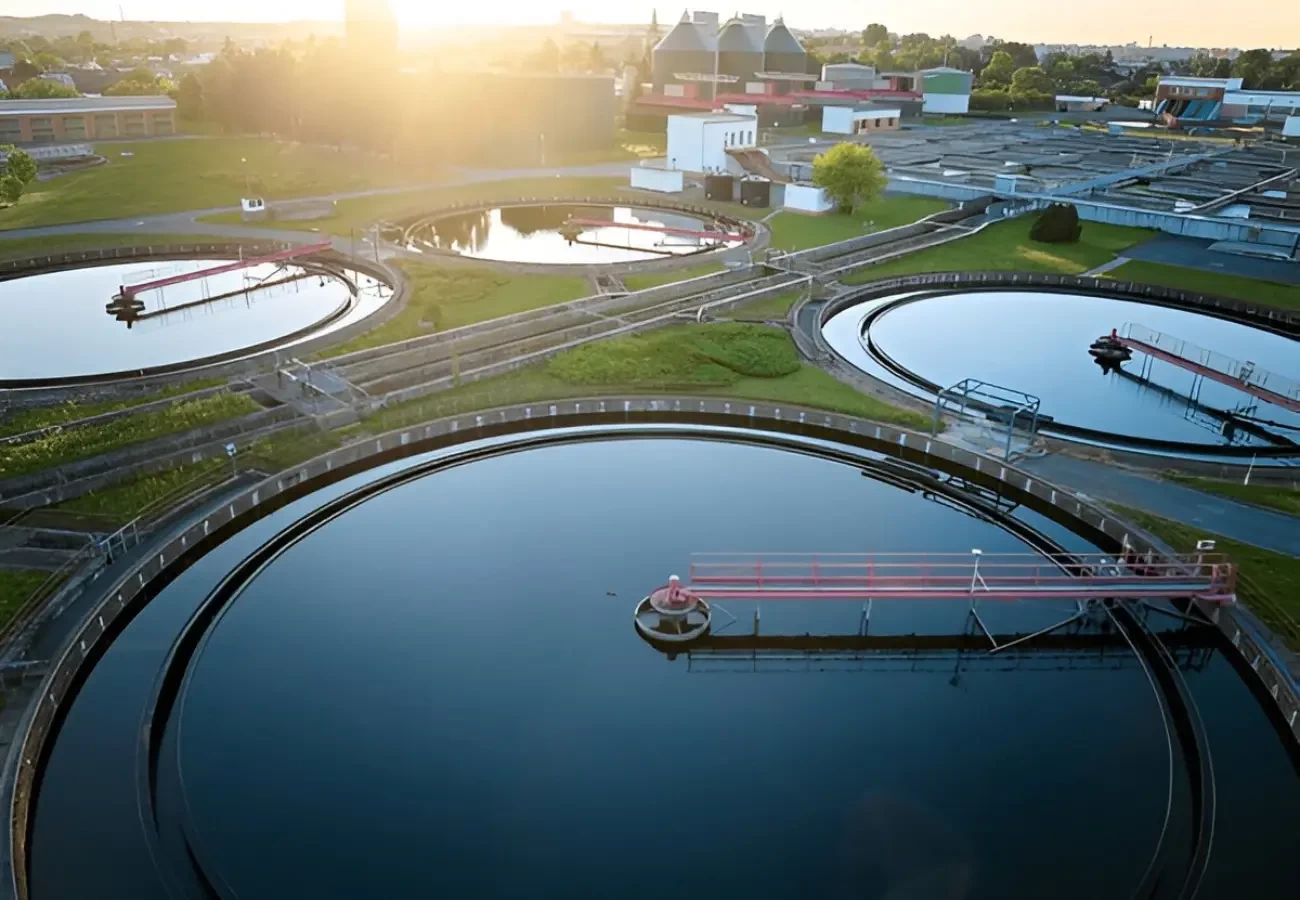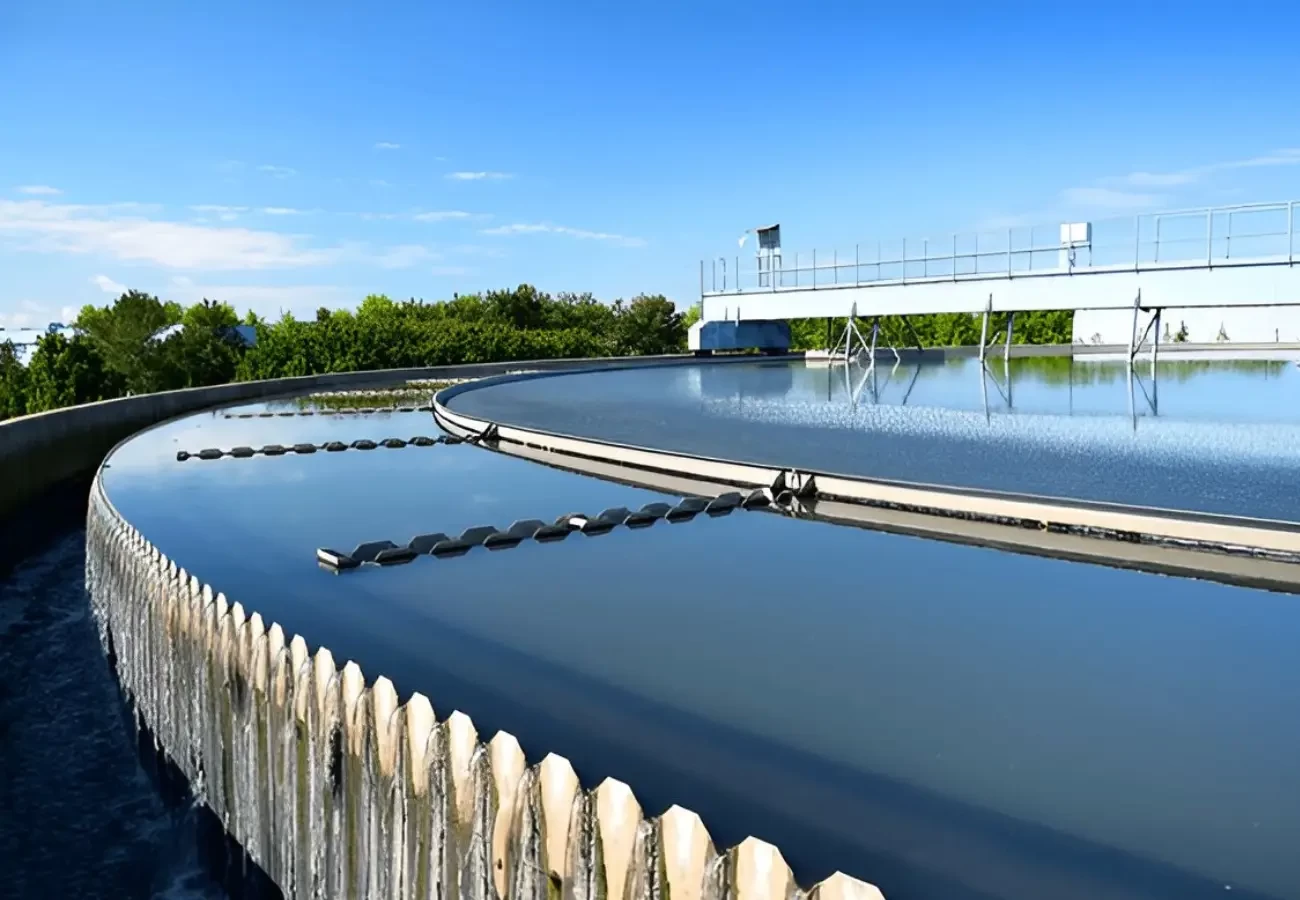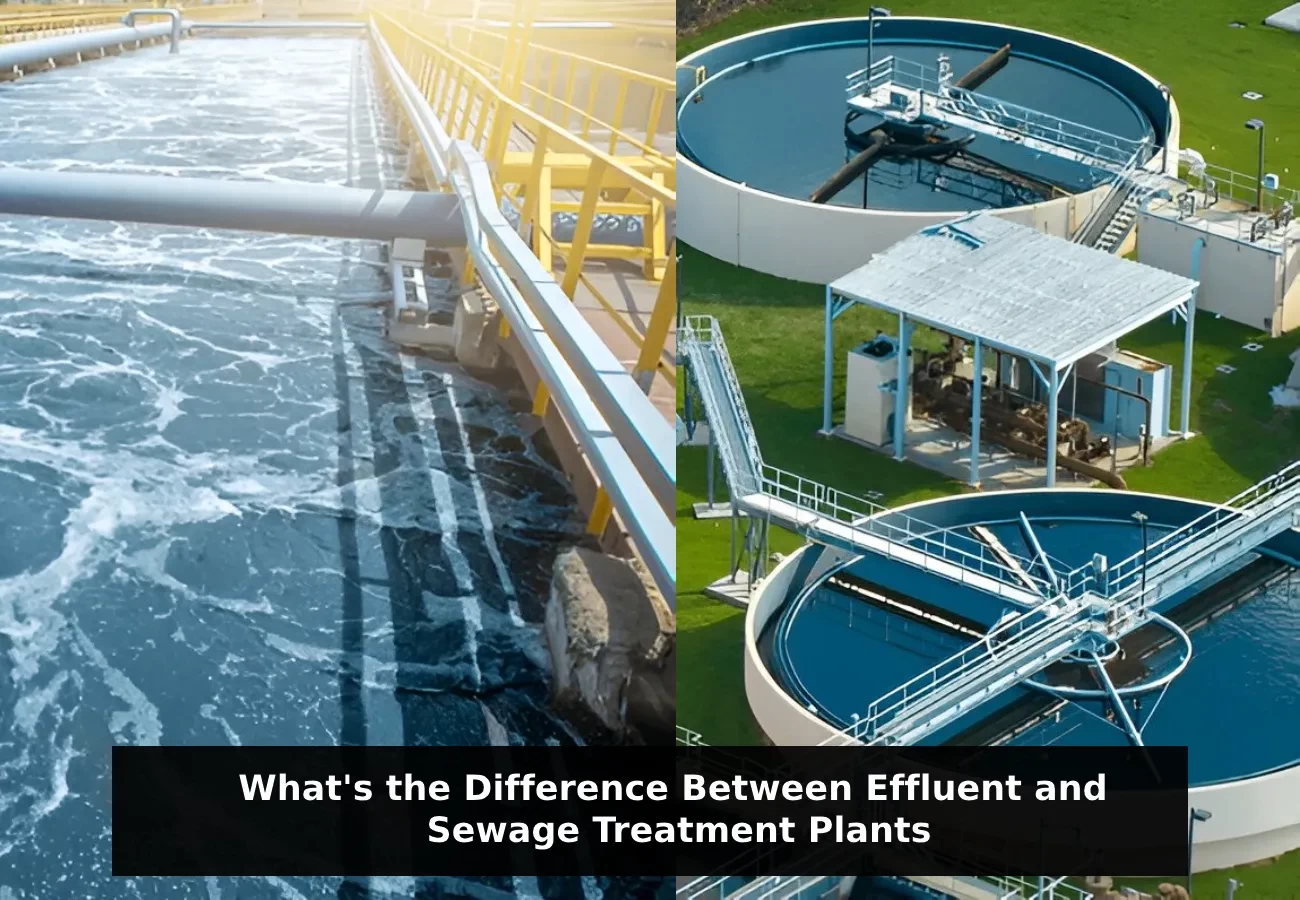What's the Difference Between Effluent and Sewage Treatment Plants
There is no doubt that clean water is a finite resource. Economic growth, population growth, and urbanization are causing water demand to exceed supply. There is a shortage of available water, especially in densely populated areas, and groundwater levels are depleting while surface water is becoming increasingly polluted. WHO estimates that half of India's morbidity is due to water-related issues. That is how crucial water treatment plants are today. Effluent treatment plants and sewage treatment plants differ mainly in their waste processing methods. Sewage Treatment Plants (STPs) process domestic sewage that contains organic matter and nutrients. Effluent Treatment Plants (ETPs) deal with industrial wastewater filled with hazardous chemicals and pollutants. In this blog, we will discuss the difference between ETP and STP.
Difference Between ETP and STP
These systems share basic treatment stages like primary sedimentation, biological treatment and filtration processes. ETPs need more complex treatment methods that target specific industrial waste types. They also use specialized chemical treatments to neutralize toxic substances and heavy metals.
You'll find STPs near urban areas where they treat municipal wastewater through biological methods. ETPs operate within industrial zones and must follow stricter regulations because of their hazardous industrial effluents. This piece details the unique features, processes and purposes that set these two vital waste management systems apart.
Sewage Treatment Plants (STPs)

Sewage treatment plants are a vital part of modern sanitation systems. They process wastewater from communities before releasing it back into the environment. These facilities use advanced biological and physical processes to turn contaminated water into safe effluent.
Wastewater from residential communities comes from our daily activities. The mixture has 99.9% water and just 0.1% solids, which can be dissolved or suspended. We see this mixture when households use water that combines with human excreta (feces and urine), bathroom waste, food preparation waste, and laundry runoff.
The organic matter in domestic sewage has protein compounds (about 40%), carbohydrates (25-50%), oils and grease (around 10%), and other components in smaller amounts. Sewage also has a lot of nutrients, especially nitrogen and phosphorus. These nutrients can lead to eutrophication if we release them without treatment.
Domestic sewage carries four types of pathogens: bacteria, viruses, protozoa, and helminths. These disease-causing microorganisms come mostly from fecal matter. Raw sewage poses a direct risk to public health.
Also Read: Modern Sewage Treatment Plant
Primary function of STPs
STPs remove contaminants from wastewater to create an effluent that's safe to release or reuse. The plants use multiple stages to turn harmful sewage into water that meets all regulatory standards.
The treatment happens in several stages: preliminary, primary, secondary, and sometimes tertiary. Preliminary treatment removes large objects and heavy materials through screening and grit removal. The primary treatment takes out 60-70% of suspended solids as they settle. Secondary treatment breaks down organic matter through biological processes. Tertiary treatment gives extra purification when we need to meet strict quality standards.
STPs are vital to protect public health. They prevent waterborne diseases and protect aquatic ecosystems. The plants also help conserve water by recycling treated wastewater for non-potable uses. Sources of sewage can be from:
Residential areas create the most common type of sewage. Bathrooms, kitchens, and laundry facilities produce sanitary sewage that has organic materials, detergents, and personal care products.
Restaurants, hotels, and businesses contribute a lot to sewage production. Their waste often has food scraps, grease, and chemicals that can block sewage systems and cause bad odors.
Schools, hospitals, and government offices produce substantial wastewater that flows into municipal sewage systems. Urban areas with combined sewers mix stormwater runoff with sewage. This increases both the volume and complexity of wastewater that needs treatment.
Effluent Treatment Plants (ETPs)

Manufacturing plants produce massive amounts of wastewater that need special treatment before it can be released. This industrial wastewater contains complex pollutants, unlike household sewage. These pollutants can damage ecosystems and human health when left untreated.
Industrial effluent, the wastewater that comes from processing operations, contains high levels of pollutants such as heavy metals, toxic chemicals, oils, grease, and various organic and inorganic materials. Each industry produces different types of wastewater. Some industries' wastewater even contains dangerous substances like cyanide.
We can group industrial wastewater into three categories: cooling, washing, and process wastewater. Each category has its own mix of contaminants. These range from suspended solids and synthetic chemicals to microplastics and leftover pharmaceuticals. This means that each type needs its own specialized treatment approach.
Also Read: What Is an Effluent Treatment Plant
Primary function of ETPs
Effluent Treatment Plants (ETPs) clean industrial wastewater by removing pollutants, contaminants, and hazardous materials before releasing it. These plants protect our natural ecosystems by stopping harmful substances from getting into water bodies.
ETPs use different methods to clean contaminated industrial water. These include physical, chemical, biological, and filtration processes. The plants also help conserve water through reuse - a huge benefit in areas where water is scarce.
These plants help industries follow environmental rules too. Companies must meet strict wastewater regulations. Violation of these rules can lead to big fines, legal problems, and possible shutdown of facilities.
Many industries need effluent treatment. These include textiles, pharmaceuticals, chemicals, food processing, pulp and paper manufacturing, refineries, and automotive industries. The textile industry creates complex wastewater that contains various chemicals from dyeing, printing, and finishing.
Drug manufacturing creates equally challenging wastewater. Their water contains potentially harmful compounds like antibiotics, steroids, and used solvents. Iron and steel plants use between 1-150 m³ of water to make one ton of steel. Hospitals add to this challenge with wastewater that contains radioactive isotopes and pathogens.
Key Differences in Treatment Processes
Treatment methods are the foundations of wastewater processing systems. And there lies the main difference between ETP and STP. They use different approaches based on the contaminants they process.
Biological vs. Chemical Treatment Methods
STPs mainly use biological treatment methods where microorganisms break down organic matter in domestic wastewater. These aerobic processes help bacteria multiply and naturally degrade sewage components. ETPs, on the other hand, use chemical treatment techniques to neutralize or precipitate hazardous materials found in industrial effluents.
Both plants can use biological and chemical processes, but their focus is different. ETPs often use chemical treatments like coagulation and flocculation to remove dissolved and suspended solids, especially heavy metals that bacteria can't eliminate effectively. STPs concentrate on biological processes that turn organic material into settleable biomass through activated sludge systems.
- Handling of Solid Waste
These treatment systems use screening mechanisms to separate large debris from liquid waste during the first treatment phase. STPs then use sedimentation tanks where solids settle at the bottom before workers scrape them away for more processing. ETPs need more complex solid waste handling because industrial sludge might contain toxic components.
- Filtration Techniques
Plant types use different filtration systems, but both use particle and membrane filtration. Particle filtration removes solids larger than one micron through bag, cartridge, or self-cleaning filters. ETPs commonly use advanced membrane filtration including reverse osmosis, ultrafiltration, and microfiltration to remove dissolved solids and microscopic contaminants.
Also Read: Advantages and Disadvantages of Reverse Osmosis Systems
- Disinfection Approaches
The final disinfection step will result in a pathogen-free discharge. STPs usually use chlorination/dechlorination as their main disinfection method, though UV radiation and ozonation are becoming popular alternatives. ETPs need more intensive disinfection processes because of complex chemical contaminants. They often use advanced oxidation processes among traditional methods.
Clean water needs less intensive disinfection. This shows how these treatment processes work together.
Conclusion
The difference between ETP and STP matters significantly to manage wastewater effectively. STPs process domestic sewage through biological processes. ETPs use specialized chemical treatments for complex industrial effluents. These systems work as vital environmental safeguards that target specific waste types.
Both treatment facilities need regulatory compliance to operate. STPs follow standard parameters for domestic wastewater discharge. ETPs face tougher oversight because they handle hazardous industrial pollutants. The facilities' proper maintenance and monitoring protect the environment and public health.
Waste characteristics determine the right treatment system choice. STPs process organic matter naturally through biological methods. ETPs use advanced chemical processes to handle industrial contaminants. These systems are the foundations of infrastructure that protect water resources and support eco-friendly waste management for future generations. As a trusted water treatment plant manufacturer, Alantech offers a range of high-quality products and services. With over 12 years of experience in the field, Alantech provides different types of water treatment plants.


